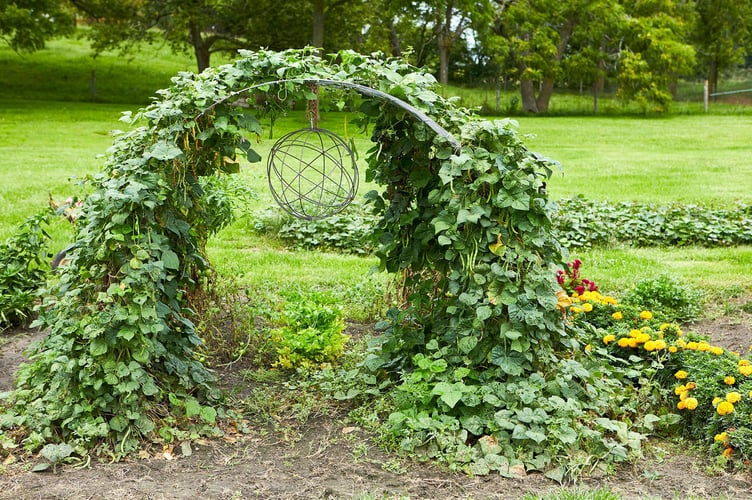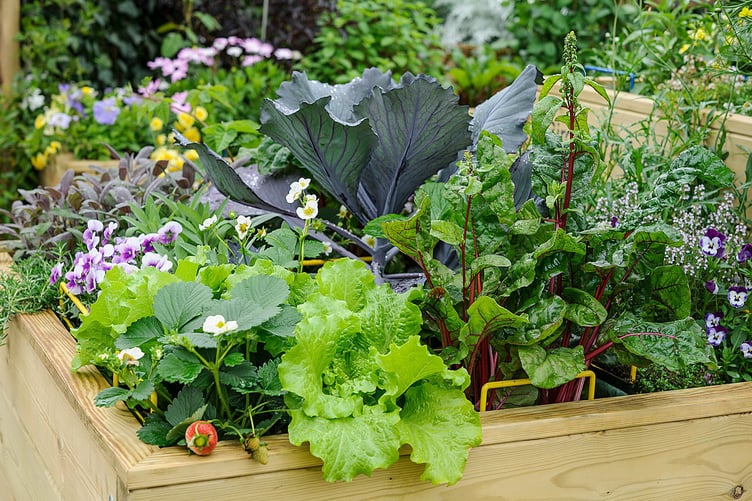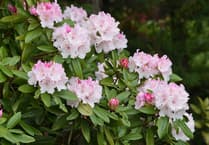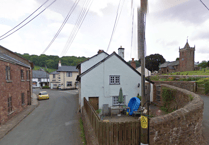THE French have a word for it - potager. Although it literally means “kitchen garden”, it’s the key to a radical approach to growing vegetables which, if you try it, could mean that your garden never looks quite the same again.
Today a potager is a garden designed and planted so that it is decorative as well as functional and in which flowers, vegetables, herbs and even fruit are mixed up to give you both food and beauty all the year round.
Even the smallest garden can be adapted to the potager approach and incorporating vegetables into flower beds is an excellent starting point.
A wonderful short-cut to the potager look is to grow edible flowers which can be used mostly in salads. Pansies and nasturtiums, violas, pot marigolds and borage are just some of the many attractive-looking flowers which can transform a vegetable garden.

Another trick worth trying is to plant climbing and trailing vegetables in among the flowers. Runners and climbing French beans and marrows can all be trained up canes, arches and trellises. Outdoor cucumbers can also be trained upwards and can be mixed with sweet peas and runner beans.
Grouping vegetables together rather than growing them in rows instantly creates a “tapestry” effect - the secret is to grow vegetables of roughly the same height but different textures and colours side by side.
Low-growing vegetables like lettuces, garden cress, salad rocket, dill and dwarf pak choi carpet the ground attractively when grown in the same bed.
Also, try to get contrast in height in your potager plot - for instance, why not train runner beans up sunflowers? You can also make instant arches for climbers by bending willow twigs or other supple branches into a loop with both ends in the soil.
These make excellent edgings and you can use them to grow, say, a mixture of runner beans, sweet peas and cucumbers.
Getting the right textures is vital in giving a potager its special quality and plants which work particularly well together are curly kale, savoy cabbage, fennel, Swiss chard and semi-leafless peas.
Potages often seem to work best when they are “busy” so it’s worth plating two crops for each bed or section each year. For instance, spring-planted endive could be followed by fennel planted in July and over-wintered leeks by summer carrots sown in May.

Whenever possible try to follow some sort of rotation so that the brassicas, onions, salads and legumes are planted in different parts of beds each year. With plants being grown so densely a high level of fertility is essential.
This can be done by applying a mulch every time something is planted and working in manure or compost at every opportunity.
Gardeners who have created potagers say it’s like having a grown-ups’ adventure playground - a place to try out unusual plants and plant combinations.
It’s amazing how quickly a potager can be created - start now and yours could be eye-catching in its first season and transform what was an “ordinary” vegetable patch or flower bed into something really special.
JUST THE JOB
What to do in West Somerset gardens in May
May is the all-action month in the garden and pests and diseases seem to proliferate before your eyes if they’re not kept in check. In West Somerset it’s usually the real beginning of spring but, as we all know, the weather can be unpredictable.
IN THE FLOWER GARDEN
Plant summer hanging baskets adding good quality compost and a slow-release fertiliser.
Thin out hardy annuals and harden off dahlias for planting. Wallflowers, sweet Williams, honesty and other biennials should be sown in a seed bed for next year’s flowering.
Trim back spreading plants such as aubrietia, alyssum and candytuft after they have flowered to encourage new growth
Trim lavender plants by about one inch, and tie in rambling and climbing roses, laying the stems horizontally to produce more flowers. Tie in sweet pea plants.
IN THE VEGETABLE GARDEN
Continue with small quantities of lettuce and radish in fortnightly succession. Main sowings of all the later brassicae and French and runner beans should be completed by mid-month. Even sweetcorn may be sown in open ground in our area.
Long season brassicae such as early broccoli, cauliflowers and Brussels sprouts should be planted out when large enough to handle easily. Onions and runner and French beans and outdoor tomatoes may be moved to their permanent positions.
Earthing up potatoes is a priority. Do the job well and you should only need one more earthing stint with the hoe before harvest.
IN THE FRUIT GARDEN
Protect strawberry plants with straw to control weeds. Harvest rhubarb, picking a third of the stems. Put netting around soft fruit plants to deter birds.
Remove blossom and fruit from newly-planted trees to help them establish during their first year. Check gooseberry bushes for green gooseberry sawfly caterpillars and remove.
Hang pheromone traps in apple trees and stone fruit trees to deter codling and plum-fruit moth activity.
Clear a space around the base of trees and add a generous portion of well-rotted manure or compost not quite touching the trunks.
IN THE GREENHOUSE
Tomatoes will be the major crop in most greenhouses from now on. Remove side shoots frequently, tap flowers daily to aid pollination and provide a liquid feed as soon as the first flower trusses form.







Comments
This article has no comments yet. Be the first to leave a comment.